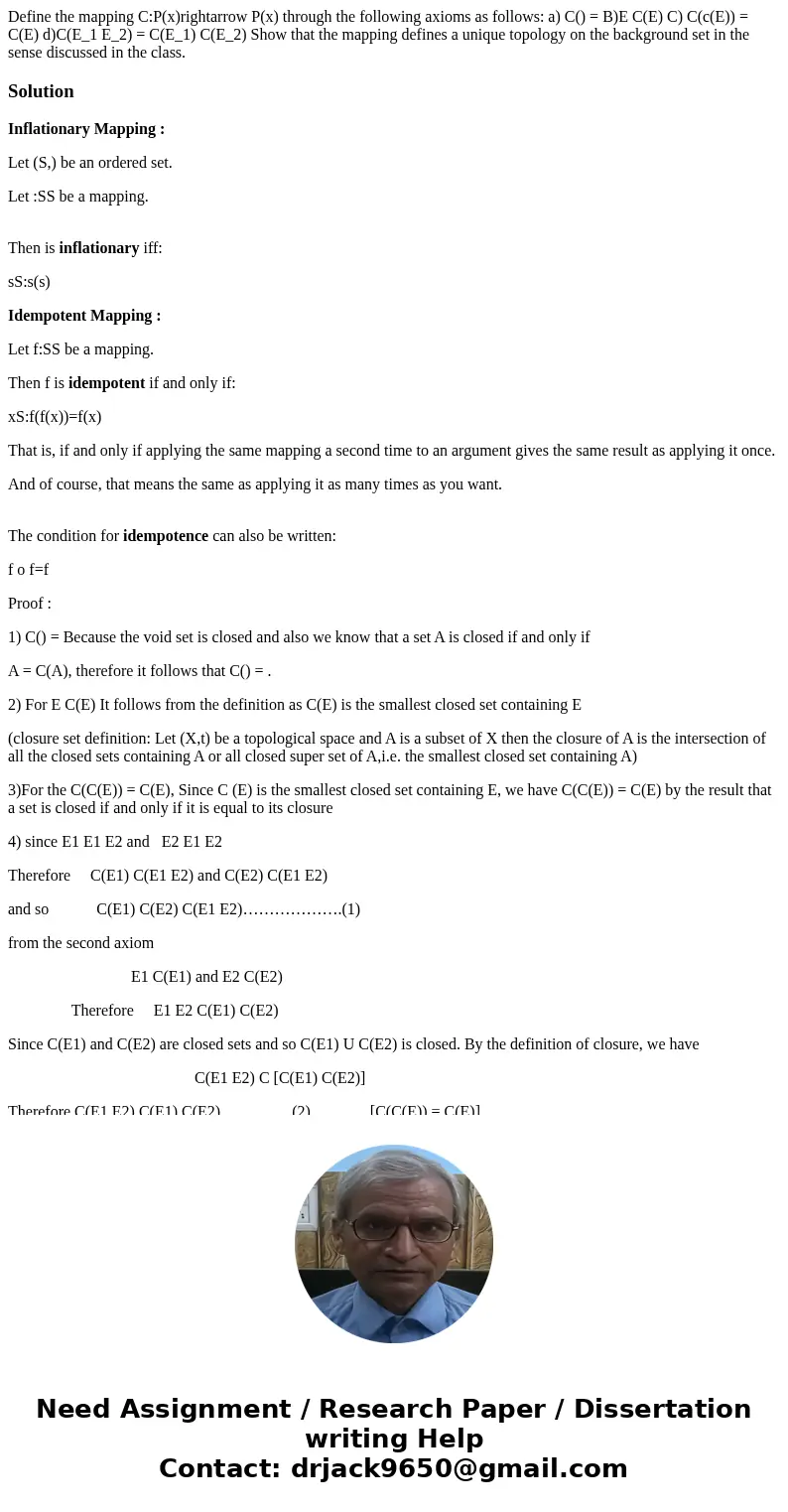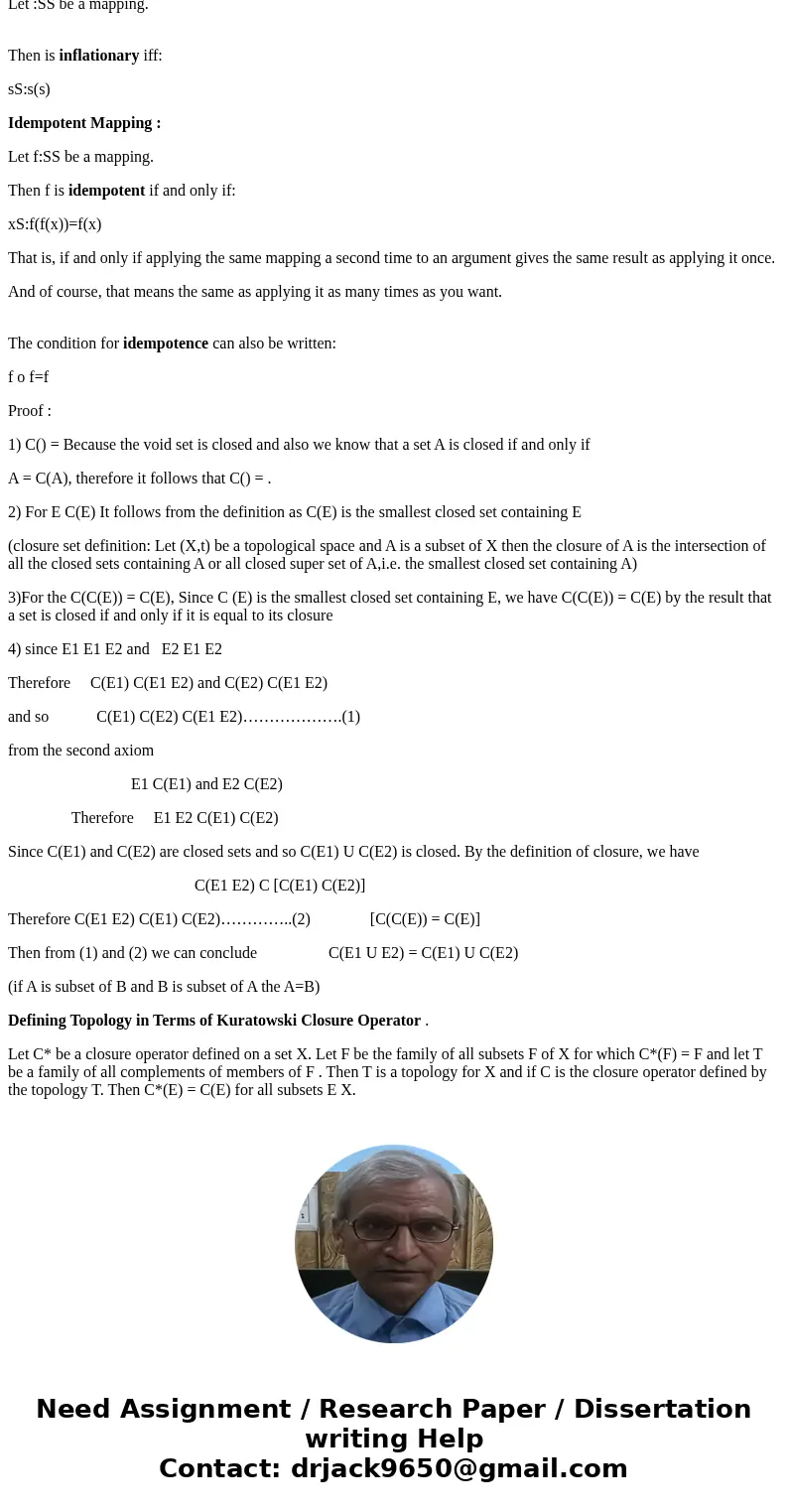Define the mapping CPxrightarrow Px through the following ax
Solution
Inflationary Mapping :
Let (S,) be an ordered set.
Let :SS be a mapping.
Then is inflationary iff:
sS:s(s)
Idempotent Mapping :
Let f:SS be a mapping.
Then f is idempotent if and only if:
xS:f(f(x))=f(x)
That is, if and only if applying the same mapping a second time to an argument gives the same result as applying it once.
And of course, that means the same as applying it as many times as you want.
The condition for idempotence can also be written:
f o f=f
Proof :
1) C() = Because the void set is closed and also we know that a set A is closed if and only if
A = C(A), therefore it follows that C() = .
2) For E C(E) It follows from the definition as C(E) is the smallest closed set containing E
(closure set definition: Let (X,t) be a topological space and A is a subset of X then the closure of A is the intersection of all the closed sets containing A or all closed super set of A,i.e. the smallest closed set containing A)
3)For the C(C(E)) = C(E), Since C (E) is the smallest closed set containing E, we have C(C(E)) = C(E) by the result that a set is closed if and only if it is equal to its closure
4) since E1 E1 E2 and E2 E1 E2
Therefore C(E1) C(E1 E2) and C(E2) C(E1 E2)
and so C(E1) C(E2) C(E1 E2)……………….(1)
from the second axiom
E1 C(E1) and E2 C(E2)
Therefore E1 E2 C(E1) C(E2)
Since C(E1) and C(E2) are closed sets and so C(E1) U C(E2) is closed. By the definition of closure, we have
C(E1 E2) C [C(E1) C(E2)]
Therefore C(E1 E2) C(E1) C(E2)…………..(2) [C(C(E)) = C(E)]
Then from (1) and (2) we can conclude C(E1 U E2) = C(E1) U C(E2)
(if A is subset of B and B is subset of A the A=B)
Defining Topology in Terms of Kuratowski Closure Operator .
Let C* be a closure operator defined on a set X. Let F be the family of all subsets F of X for which C*(F) = F and let T be a family of all complements of members of F . Then T is a topology for X and if C is the closure operator defined by the topology T. Then C*(E) = C(E) for all subsets E X.


 Homework Sourse
Homework Sourse